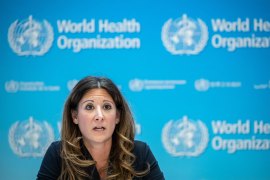Research Roundup: Medicaid Expansion And Consumers’ Costs; Better Use Of Brokers
Each week, KHN compiles a selection of recently released health policy studies and briefs.
Health Affairs:
Medicaid Expansion In Opt-Out States Would Produce Consumer Savings And Less Financial Burden Than Exchange Coverage
In the twenty-three states that have decided against expanding Medicaid ...uninsured adults who would have been eligible for Medicaid and have incomes at or above the federal poverty guidelines are generally eligible for Marketplace (insurance exchange) premium tax credits .... This study compared estimated out-of-pocket spending for care and premiums ... under two simulation scenarios: obtaining coverage through a silver plan with subsidized cost sharing and enrolling in expanded Medicaid. Compared with Marketplace coverage, Medicaid would more than halve average annual out-of-pocket spending ($938 versus $1,948), while dramatically reducing the percentage of adults in families with out-of-pocket expenses exceeding 10 percent or 20 percent of income. (Hill, 1/28)
The Urban Institute/Robert Wood Johnson Foundation:
Insurance Brokers And The ACA: Early Barriers And Options For Expanding Their Role
In-person assistance from navigators and other
professionals has significantly facilitated individual and family enrollment into the health insurance marketplaces developed under the Affordable Care Act (ACA). However, though enrollment in state and federally facilitated marketplaces was at 6.7 million by late 2014 and has exceeded 9.5 million thus far for 2015, millions eligible for financial assistance through the marketplaces remain uninsured. As federal and state funding for navigators and other publicly funded assisters decreases in the coming
years, private insurance brokers and agents ... could play an increasingly important role in expanding coverage to the hard-to-reach uninsured and in ensuring that those already enrolled maintain coverage in the future. (Corlette, Blumberg and Wengle, 2/2)
JAMA Pediatrics:
Parents’ Preferences For Enhanced Access In The Pediatric Medical Home
Efforts to transform primary care through the medical home model may have limited effectiveness if they do not incorporate families’ preferences for different primary care services. ... Parents [contacted through an Internet survey] were most likely to choose primary care offices that guaranteed same-day sick visits, followed by those with higher professional continuity. Parents were also significantly more likely to choose practices with 24-hour telephone advice plus nonurgent email advice, evening hours 4 or more times a week, and at least some hours on weekends. ... As primary care practices for children implement aspects of the medical home model, those that emphasize same-day sick care and professional continuity are more likely to meet parents’ preferences for enhanced access. (Zickafoose et al., 2/2)
Health Affairs:
Decline In Economic Returns From New Drugs Raises Questions About Sustaining Innovations
[W]e analyzed the economic returns for four cohorts of new prescription drugs ... (in 1991–94, 1995–99, 2000–04, and 2005–09) and compared fluctuations in revenues with changing average research and development (R&D) and other costs to determine patterns in rewards for pharmaceutical innovation. We found that the average present values of lifetime net economic returns were positive and reached a peak with the 1995–99 and 2000–04 new drug cohorts. However, returns have fallen sharply since then .... If this level of diminished returns persists, we believe that the rewards for innovation will not be sufficient for pharmaceutical manufacturers to maintain the historical rates of investments needed to sustain biomedical innovation. (Berndt et al., 2/2)
The Kaiser Family Foundation:
An Overview Of New CMS Data On The Number Of Adults Enrolled In The ACA Medicaid Expansion
New preliminary data from the Medicaid Budget and Expenditure System (MBES) released by the Centers for Medicare and Medicaid Services (CMS) details for the first time the number of adults enrolled in Medicaid under the new Affordable Care Act (ACA) Medicaid expansion category. The data show that as of March 2014, among 48 states reporting data, 4.8 million adults out of the total 54.1 million individuals enrolled in Medicaid were in the ACA Medicaid expansion category .... This issue brief provides an overview of the new data. (Snyder et al., 2/2)
The Kaiser Family Foundation:
Medicaid Expansion In Indiana
In January 2015, the Centers for Medicare and Medicaid Services (CMS) approved Indiana’s amendment of its § 1115 demonstration, the Healthy Indiana Plan (HIP). The amended waiver implements the Affordable Care Act’s (ACA) Medicaid expansion …. Indiana’s demonstration is more complex than others approved to date. The program has multiple parts, including four different Medicaid benefit packages …. Indiana’s waiver is different than other Medicaid expansion waivers approved to date in that it allows the state to prevent certain newly eligible beneficiaries (non-medically frail adults above the federal poverty level) from re-enrolling in coverage for six months after they are disenrolled for non-payment of premiums. (2/3)
The Kaiser Family Foundation:
Summary Of Medicare Provisions In The President’s Budget For Fiscal Year 2016
The President’s FY2016 budget proposal would reduce net Medicare spending by $423 billion between 2016 and 2025, and is estimated to extend the solvency of the Medicare Hospital Insurance Trust Fund by approximately five years. This brief summarizes the Medicare provisions: More than one-third (34%) of the proposed Medicare savings are due to reductions in Medicare payments to providers, most of which affect providers of post-acute care. Nearly one-third (30%) of the proposed savings are related to Medicare prescription drug spending. The largest single-source of Medicare savings (23% of Medicare savings) is a provision that would require drug manufacturers to provide Medicaid rebates on prescriptions for Part D Low Income Subsidy enrollees. (Jacobson et al., 2/3)
Heritage Foundation:
Q3 2014 Health Insurance Enrollment: Employer Coverage Continues To Decline, Medicaid Keeps Growing
Third quarter 2014 health insurance enrollment data show ... increasing Medicaid enrollment and declining enrollment in employer plans. However, while individual-market enrollment increased substantially in both the first and second quarters, it declined by 357,000 during the third quarter. The net result was 160,000 fewer Americans with health insurance. For the first nine months of 2014, individual-market enrollment grew by 5.83 million, but 4.93 million individuals lost employer coverage—offsetting 85 percent of the individual-market gain. Thus, the net increase in private health insurance for 2014 is so far 893,000 individuals. During the same period, Medicaid enrollment grew by almost 7.49 million. (Haislmaier and Gonshorowski, 1/29)
Here is a selection of news coverage of other recent research:
Reuters:
Docs See Ill Patients’ Families As Barrier To Talking About Care Plan
Doctors say that when patients are seriously ill, the main obstacles to discussing what the goals of care should be are family disagreement and patient denial. “It’s a difficult time,” said lead author Dr. John J. You of McMaster University in Hamilton, Ontario in a phone interview. “But that means we need to be there with extra support and profoundly good skills.” (Doyle, 2/2)
Reuters:
Cost Of Having Diabetes Has Doubled In Two Decades
The cost of managing diabetes has more than doubled in the past 20 years, a new analysis says. The average diabetes patient now spends $2,790 more per year than they did in 1987 - and more than half the additional spending is for medications. “People need to be mindful about the substantial increase in the cost of diabetes, which has been partially fueled by the rising prices of newer drugs,” said Xiaohui Zhou, a health economist at the Centers for Disease Control and Prevention (CDC) who led the study. (Kennedy, 2/2)
Reuters:
After Heart Attacks, Most Don't Get Enough Statins
In the U.S., less than a third of older heart “event” patients being discharged from the hospital get the recommended high-intensity statins, according to a new study that looked at prescriptions filled. National guidelines from the American College of Cardiology and American Heart Association say the majority of patients should be on a high-dose statin following a serious heart disease-related event like heart attack or bypass surgery. (Doyle, 1/29)
MedPage Today:
Match Not To Blame For Low Resident Salaries
Resident salaries are low, but it's not the match's fault, according to a study published in the American Economic Review. Rather, high demand for a limited number of desirable residency positions depresses salaries, wrote author Nikhil Agarwal, PhD, an economist at the Massachusetts Institute of Technology. The medical residency match is one of only a few labor markets in the U.S. that is organized around a centralized clearinghouse, Agarwal told MedPage Today. (Yurkiewicz, 1/30)






